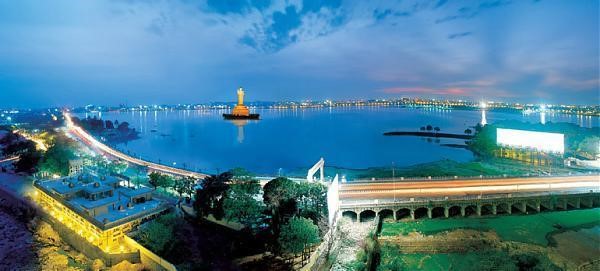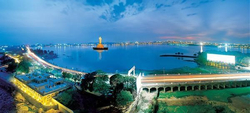BLOG: Lessons in sustainability from India’s past: Water, water everywhere?

By Rithika Fernandes
India ranks second worldwide in farm output. The country’s total arable land area is 159.7 million hectares, while the total irrigated crop area is 82.6 million hectares. Agriculture is the predominant user of water and in India, 83% of available freshwater is used for the same. Therefore, agriculture cannot be discussed without talking about water management. Water and food challenges will only increase with the increase in population, urbanisation, and climate change risk. Meeting these challenges will require dynamic institutions and actions that can balance needs and available resources effectively.
As agriculture and water are closely interlinked, this article will first examine sustainable practices that effectively captured and utilised water. In a subsequent article, traditional agricultural practices which are organic, eco-friendly and sustainable will be explored.
The dominant feature of the climate over most of South Asia is the contrast between the short monsoon season, when rainfall is abundant, and the longer dry season, when water is in short supply. While there are areas which are water rich, receiving more rainfall, these areas can also be water stressed because of poor management. Management is key in ensuring sustainability in both agriculture and in water reserves.
Parakrama Bahu the Great, King of Sri Lanka in 1153-1186 AD, was regarded highly, having contributed to the overall advancement of agriculture and ushering an era of prosperity in the country. Constructing an unprecedented number of irrigation works (such as underground canals, tanks and artificial reservoirs), he is famously quoted as saying, “Let not even a drop of rain water go to the sea without benefiting man”.
Along similar lines, in the south of India, the states of Tamil Nadu, Karnataka and Andhra Pradesh have a rich heritage of tanks. Tamil Nadu lacks perennial rivers and therefore depends strongly on the monsoons. Employing a simple form of engineering, a network of eris which were either tanks where river water was diverted into through earthen channels or standalone tanks fed by the rain, villages and urban bodies would receive water. The viability of these systems was managed by a neerkatti or a water manager. Using this principle, historical sites like Vijayanagar and Seringapatam were irrigated by means of diversion dams or anicuts which led to storage tanks. In the river-rich, low-lying, deltaic plains of Bengal and the eastern coastal plains of Orissa, Andhra Pradesh and Tamil Nadu, the agricultural lands were below the river channels. Rice irrigation in these areas depended on flooding, supplemented by diversion canals and storage tanks and by monsoon rainfall.
Wells and earthen dams were the main sources of irrigation, in the Deccan Plateau, but diversion weirs with storage structures were also used. Qanats or horizontal tunnels, which are a common sight in Iran, can also be found tapping groundwater from hillsides in the Western Ghats.
Employing a slightly different system involving talabs or man-made tanks, the Western states of Rajasthan and Gujarat, and New Delhi where water is always scarce, used architecturally sophisticated structures called baolis/jhalaras/vavs or step wells. Water during the rainy season was diverted from canals into the talabs from where it would percolate down into the ground recharging a complex of aquifers, raising the water table. Step-wells were five to six storied deep structures which comprised of not just a sunken deep cylinder from which water could be extracted, but also an adjacent stone-lined trench with an embedded staircase and side ledges. The latter allowed year round access to ever changing water levels within these “wells”. In the desert areas of Rajasthan, an indigenous rainwater harvesting structure called taanka was built for each household. The taanka is a cylindrical paved underground pit collecting rainwater. It was enough to tide over a small family during the dry season. Other arid areas like the Kutch peninsula constructed sloping rubble structures which would intercept water from local runoff. These wells and stone dam structures are called gabarbands.
A number of rectangular embankments were constructed in areas of Central India, important for wheat production. In Bihar, these rectangular embankments, known as ahars, would flood from runoff and irrigate low-lying land nearby which was used to grown rice. Named after the town of Ramtek, the Ramtek model, used in some parts of Maharashtra, is a series of tanks, connected underground and surface canals. Like the cascading tanks of Tamil Nadu, here too, water captured in the foothills flows down through successive tanks and canals to the plains. Another type of irrigation system designed by landowners in Maharashtra is called the phad.
It involves a check dam constructed over a river from which a series of canals carry water to the fields. In the fields, excess water gets carried into distributaries and field channels via outlets called sandams. Like the phad, khadins are made up of earthen embankments called dhoras which is built across hill slopes. Surface runoff from the slopes is harvested by khadins which allow for land to be saturated with water. Excess water is drained off by sluices and spillways. This system was first used in Jaisalmer designed by the Paliwal Brahmins of the area.
Terracing and contour canals carry water to cultivation plots in the Himalayan foothills while in the Indo-Gangetic plains, wells and feeder canals are used to capture and convey water from streams. Mountainous regions like Himachal Pradesh, Uttarrkhand, Sikkim utilise small channels called khuls/khuds which carry glacier melt to fields. The responsibility of maintaining these channels was with one person called kohli. In Ladakh, small tanks called zabo, collecting glacier melt from a network of channels, irrigate fields.
An indigenous version of today’s drip irrigation system, called the bamboo drip irrigation is common in the north-eastern states. Tribes of the Khasi hills use a series of bamboo pipes of varying diameters to carry spring water to their fields saving an estimated 20 litres of water over several kilometres.
Water soak pits or earthen check dams went by various names based on their location. In Karnataka they were called madakas, in Orissa- pemghara, and in Rajasthan, johads. They were made by excavating soil in higher elevation areas which naturally bound the structure on three sides while the fourth wall was constructed to hold the water. This is a cost effective way to ensure a replenishment of the water table and to maintain soil-water balance. Another is katta, which is a temporary stone bund made by binding mud and loose boulders. This is often built across small streams retarding the flow of water, enabling some amount to seep into the ground. Dug-wells are a common sight in households along the South-western coast of India.
In cities like Hyderabad and Udaipur, large man-made lakes called sagars were built to cater to the needs of the urban populace.
With only 8 percent of India’s rural population having access to treated water, unpredictable monsoons, climate variability being compounded upon by climate change, polluted and drying water sources, the increase in frequency of droughts and floods, high suicide rates among farmer, it is time that India takes seriously the indigenous knowledge and structures that existed and still exist.
Perhaps, replication, reuse and repair of the techniques and structures discussed in this write up can rectify the country’s water status quo. Let’s not let it get to the point where “The next war fought over water” actually becomes a reality.
Rithika Fernandes works as a Senior Project Officer with the sustainability team on ACCCRN portfolio and Misereor project at ICLEI South Asia.




